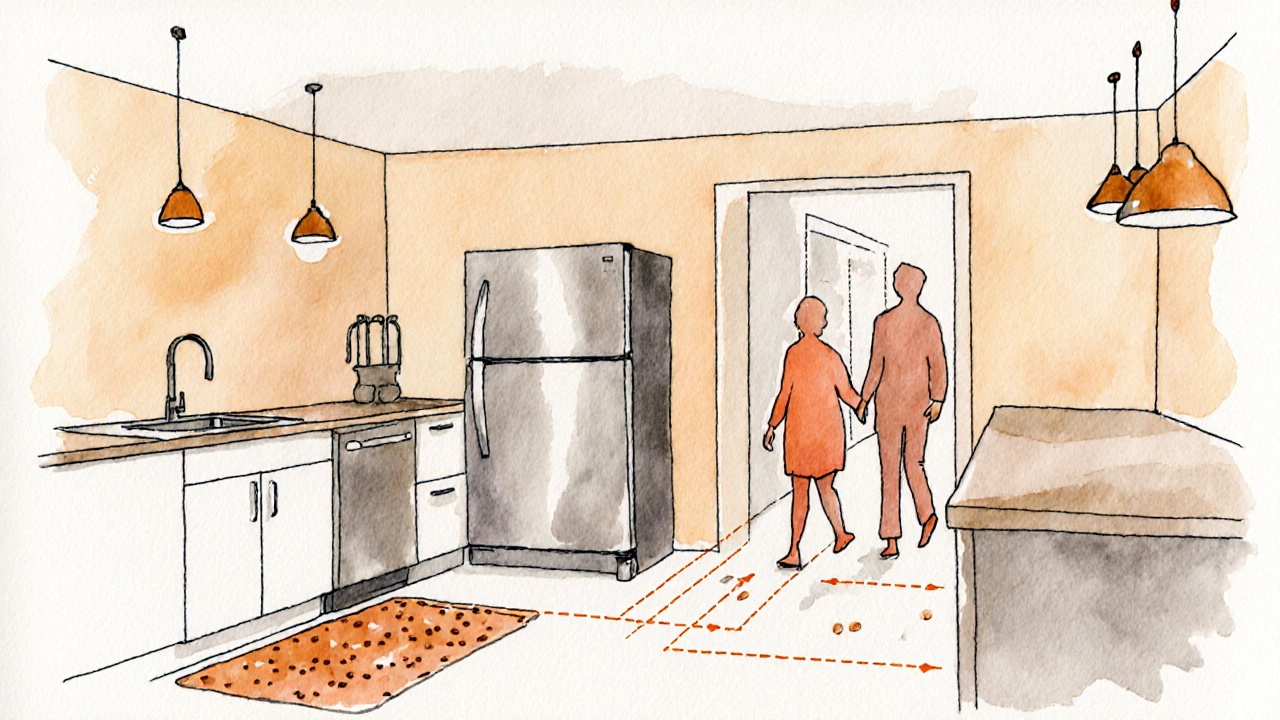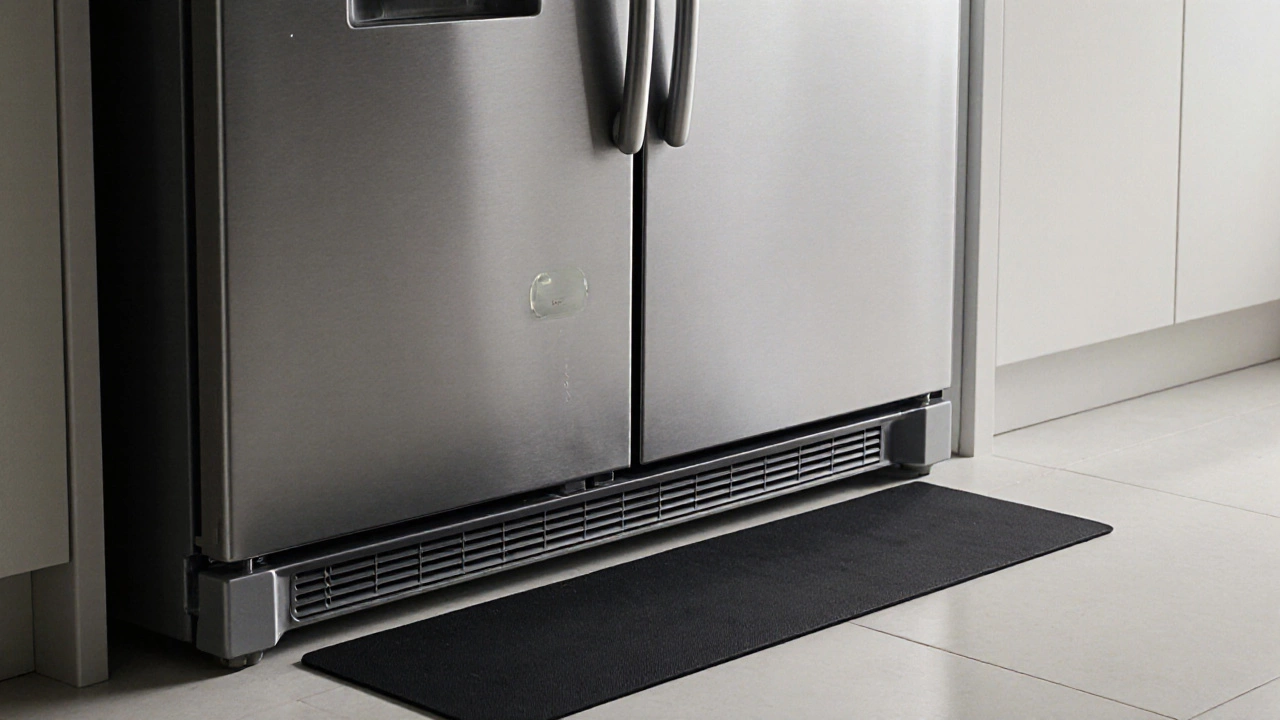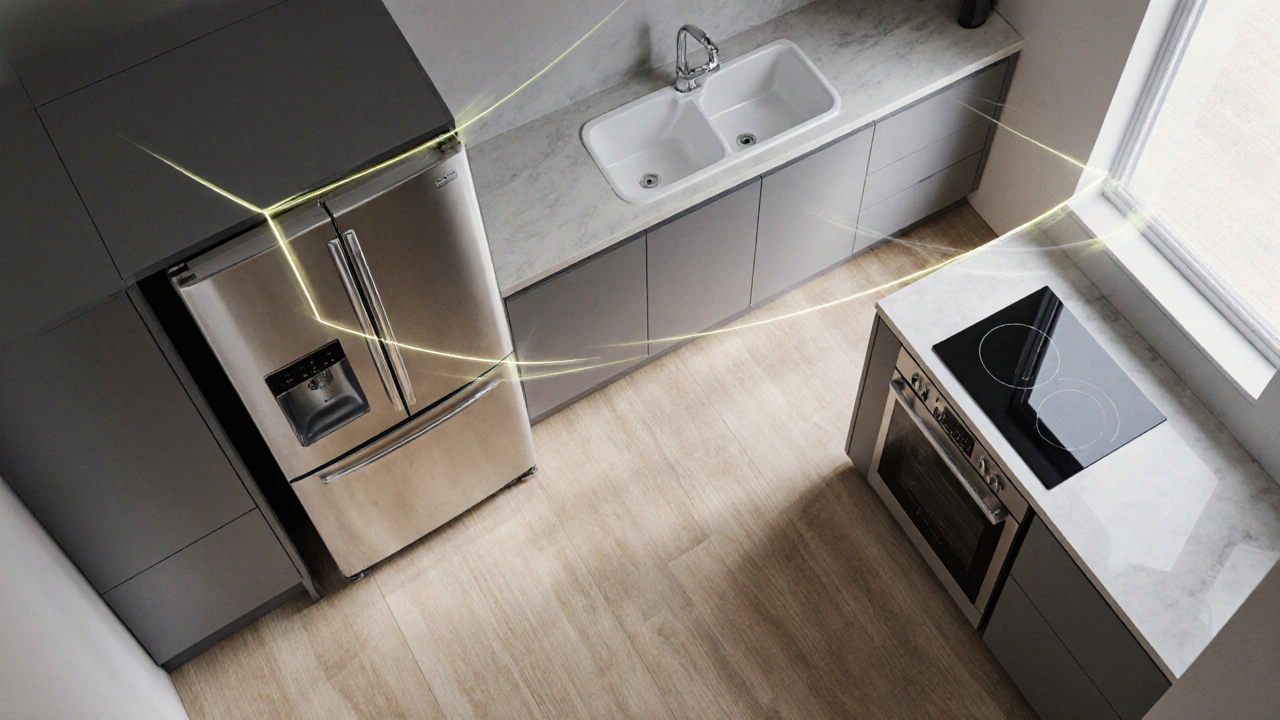Kitchen Fridge Placement Planner
Placement Analysis
Enter your kitchen measurements and click "Calculate Optimal Placement" to analyze your fridge positioning.
Work Triangle Visualization
Traffic Flow Considerations
Quick Takeaways
- Place the fridge within the kitchen’s work triangle but don’t block traffic lanes.
- Give the door at least 90cm of clearance for a smooth swing.
- Keep the unit near an electrical outlet and a ventilation gap.
- Measure the height of the countertop to avoid awkward bending.
- Avoid corners where the door hits the sink or stove.
Finding the right spot for a fridge can feel like solving a puzzle. The goal is to make food grab‑and‑go easy without crowding the cooking zone. Below you’ll learn how to map a kitchen, test common layouts, and finish the job without a mis‑step.
fridge placement isn’t just about the wall you pick; it’s about how the whole kitchen moves, breathes, and works for you.
Refrigerator is a large, insulated appliance used to keep food and drinks cold. It typically measures 70-90cm wide, 150-180cm tall, and needs a dedicated power outlet. When you size a fridge, the dimensions dictate how much room the door swing needs and where ventilation gaps should sit.
Understanding the Kitchen Work Triangle
The Work triangle is a design principle that connects the sink, stove, and refrigerator with an imaginary triangle. The sum of the three sides should stay between 4m and 7.9m to keep movements efficient.
Why does it matter? If the fridge sits too far from the sink and stove, you’ll waste steps reaching for ingredients. If it’s too close, you’ll block the flow of pots and pans. The triangle helps you balance distance and accessibility.
- Side 1: Refrigerator↔Sink
- Side 2: Sink↔Stove
- Side 3: Stove↔Refrigerator
Measure each side with a tape measure, then add them up. If the total exceeds 8m, consider shifting the fridge or rearranging the countertop.

How Traffic Flow Shapes Fridge Location
Beyond the triangle, a kitchen has high‑traffic lanes: the main walk‑through, the “prep lane” between sink and countertop, and the “service lane” from fridge to pantry. The fridge should sit off‑center from these lanes, allowing people to pass without opening the door.
Traffic flow refers to the pattern people follow while moving inside a room. Good flow reduces collisions and keeps the workspace safe. A rule of thumb: leave at least 90cm of clear space on either side of the fridge door when it’s fully open.
Common Placement Options and Their Trade‑offs
| Location | Pros | Cons | Best For |
|---|---|---|---|
| Against a side wall | Easy access, fits most work triangles, simple wiring | Can block pantry or dishwasher if too close | Standard rectangular kitchens |
| Next to an island | Creates a central food hub, good for open‑plan spaces | Requires extra ventilation clearance, may need a dedicated line | Large islands with built‑in seating |
| In a corner | Maximizes wall space, hides appliance | Door swing often hits adjacent counter or sink | Very tight layouts where wall space is scarce |
| Freestanding in a walk‑through | Allows flexible re‑layout, easy to replace | Breaks traffic flow, can feel cluttered | Homes that anticipate future kitchen remodels |
Take the table as a starting point. Your final decision will hinge on a few concrete measurements.
Practical Steps for Measuring and Installing
- Mark the intended spot on the floor with painter’s tape.
- Check the Door swing - it should have at least 90cm of clear radius.
- Verify a Electrical outlet is within 30cm of the back of the unit. If not, plan a licensed electrician install.
- Leave a 5‑cm gap between the fridge back and the wall for Ventilation. Good airflow prevents overheating and saves energy.
- Measure the height of your Countertop. If the fridge sits higher than the countertop, you’ll need a step stool for heavy items.
- Slide the unit in place, level it with a bubble level, and secure the feet according to the manufacturer’s guide.
Once the fridge is level, run a quick test: open the door fully and watch for any contact with nearby surfaces. Adjust as needed before you load groceries.

Ergonomic & Safety Considerations
People spend at least 15minutes a day opening a fridge. Small ergonomic tweaks make that time painless.
- Handle height: Aim for the handle to be at elbow level (about 100‑110cm from the floor). If the fridge is taller, install a pull‑out shelf inside.
- Lighting: Ensure the interior light reaches the back. A poorly lit fridge encourages you to hunt for items, increasing door‑open time.
- Child safety: If kids are around, consider a lock that limits door opening to 30cm.
Safety also means keeping the floor dry. Place a small mat in front of the fridge to catch spills and prevent slipping.
Mistakes to Avoid
Even seasoned homeowners slip up. Here are the most common errors and how to sidestep them.
- Too close to the stove: Heat can raise the fridge’s internal temperature, forcing it to work harder. Keep at least 60cm between the two.
- Blocking the pantry: If the fridge door stops the pantry door, you’ll waste time juggling both.
- Ignoring future upgrades: Leave spare wiring space for a larger unit or a side‑by‑side fridge with a water dispenser.
- Neglecting the floor’s level: An unlevel fridge causes uneven door closure, leading to frost buildup.
Frequently Asked Questions
How far should a fridge be from the sink?
Ideally 45‑60cm. This distance lets you pull a dish from the sink and place it in the fridge without crowding the doorway.
Can I put a fridge on an island?
Yes, if the island is at least 90cm wide and you provide a dedicated power circuit and ventilation clearance. The island version works best in open‑plan kitchens where the fridge becomes a social hub.
What is the minimum clearance behind a fridge?
A 5‑cm gap is the industry minimum. It allows heat to escape and gives you room for the power cord.
Should my fridge door open inward or outward?
Most modern units open inward, but if you have a tight corner, an outward‑opening model can prevent the door from hitting the counter or wall.
Do I need a professional to move the fridge?
Because a refrigerator is heavy and contains refrigerant, it’s safest to hire movers with a dolly and a strap. DIY moves risk damage to the door gasket and the floor.
With the right measurements, a clear view of traffic flow, and a quick glance at the work triangle, you can slot the fridge into a spot that feels natural. The next time you grab a snack, you’ll thank yourself for planning ahead.

